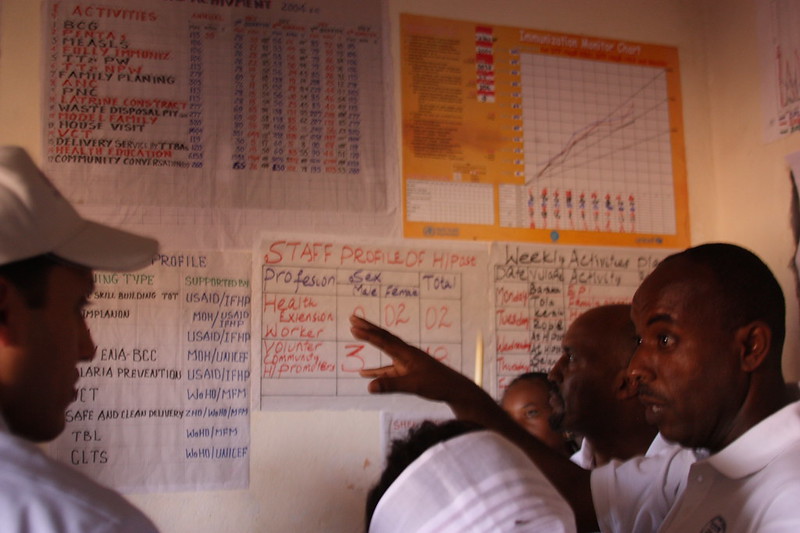At today’s London Somalia Conference, Somalia’s President Farmajo stressed the need for arrears clearance and normalization of relations with the international financial institutions, but appears to have refrained from proposing a two-year debt relief process, as previously rumored. Clearing arrears to the international financial institutions should only take place within the context of the Heavily Indebted Poor Country (HIPC) debt relief initiative. This will be a multiyear process that should take a back seat to more immediate humanitarian, security, and economic needs. However, President Farmaajo’s government can take actions now that would help facilitate the path forward. I make five recommendations as Somalia heads down the arrears clearance/debt relief path, using Liberia’s experience as a reference point.
The importance of the debt relief process
Somalia, among the poorest countries in the world, is one of three remaining countries that are eligible for comprehensive debt relief under the HIPC Initiative (the other two are Sudan and Eritrea). Somalia is estimated to have over $5 billion in external debt, with Paris Club creditors representing the largest single bloc (roughly $2.5 billion), followed by non-Paris Club bilateral creditors (roughly $1.5 billion) and multilateral creditors (roughly $1.5 billion). Much of Somalia’s debt is in arrears. Under the HIPC Initiative and the complementary Multilateral Debt Relief Initiative, virtually all of Somalia’s multilateral debt and the vast majority of its bilateral debt would be eliminated. It is important to note that none of this debt is currently being serviced, and no creditor actually expects to be paid.
While Somalia’s government should be applauded for its ambition and recognition of the importance of normalizing relations with international financial institutions and the broader financial community through the debt relief process, meeting the humanitarian and security needs of the Somali people should remain its primary focus. Diversion of time, talent, or resources from these near-term urgent priorities to the longer-term debt relief cause would be counterproductive. But there are measures that can be taken to support the debt relief process that would also support humanitarian and security objectives.
Liberia’s experience in the 2000s, as it began the process of extricating itself from over a decade of violent conflict, provides some useful lessons. While Somalia’s challenges are arguably much more difficult, the debt relief process in Liberia successfully established the building blocks for sound economic policy and basic institution building. The government of Somalia and its international partners will need to move forward in a disciplined manner, recognizing that there will be bumps, if not boulders, in the road ahead.
Five recommendations for Somalia’s debt relief process
I offer the following five recommendations for the government of Somalia that should help pave the way toward a successful HIPC process:
-
Work closely with the International Monetary Fund on a macroeconomic policy framework that would lead to a Staff Monitored Program (SMP) with upper credit tranche standards. While the current Somalia SMP serves as a useful starting point, it will need to be significantly strengthened, and sustained performance observed, before Somalia fulfills the HIPC condition of demonstrating a track record of reform and sound policies. In the case of Liberia, the period from agreement on the SMP to HIPC decision point was two years, but in Somalia’s case it is likely to be much longer given the protracted insecurity, weak institutions, and current drought-related challenges.
-
Secure agreement with the international donor community on a medium-term strategy for economic management that reflects a coherent approach to basic public financial management, including measures to fight corruption. Many of the pieces already exist under the World Bank’s Multi-Partner Fund, but there does not appear to be any agreed overarching strategy, and there is no reference to fighting corruption, despite reports on the severity of the problem. In the case of Liberia, the government and its international partners established the Governance and Economic Management Assistance Program, which provided donors and creditors with the confidence that their resources would be effectively used and measures would be applied to mitigate the risk of corruption.
-
Maximize use of pre-arrears clearance grants, including through donor-supported trust funds. Trust funds, such as the Multi-Partner Fund and the UN Multi-Partner Trust Fund, are playing a critical role in supporting Somalia’s development and reconstruction needs. Moreover, despite Somalia being in arrears to the World Bank and African Development Bank, both institutions provide for pre-arrears clearance grants for capacity building and other urgent needs. Demonstrated success in meeting the objectives of these smaller operations will provide evidence of Somalia’s ability to effectively utilize much larger amounts when arrears are cleared.
-
Work with donors to establish a National Development Plan (NDP) that can serve as the Poverty Reduction Strategy Paper required for HIPC debt relief. The current NDP is an excellent start but it needs improvement, including addressing issues related to fiscal federalism and plans for increased domestic resource mobilization. Measures to monitor and assess progress on the NDP also need to be established.
- Begin to develop a debt relief roadmap that identifies the potential sources and uses of funds for arrears clearance and debt relief. Arrears clearance at the international financial institutions should be fairly straightforward. Unlike at the time of Liberia’s arrears clearance, the World Bank and the African Development Bank have set aside resources under the IDA and African Development Fund replenishment agreements that should cover the cost. IMF arrears clearance, which is likely to follow the Liberia model, is more complicated but feasible. The Paris Club element could be a problem since the United States, which is a large creditor to Somalia, may find it difficult to come up with the money needed to cover the cost of debt relief given proposed cuts to US foreign assistance by the Trump administration. But this is a problem that does not need an immediate solution, since it is highly unlikely that Somalia will be ready for the HIPC decision point within the next two years, despite its government’s wishes.
Disclaimer
CGD blog posts reflect the views of the authors, drawing on prior research and experience in their areas of expertise. CGD is a nonpartisan, independent organization and does not take institutional positions.





